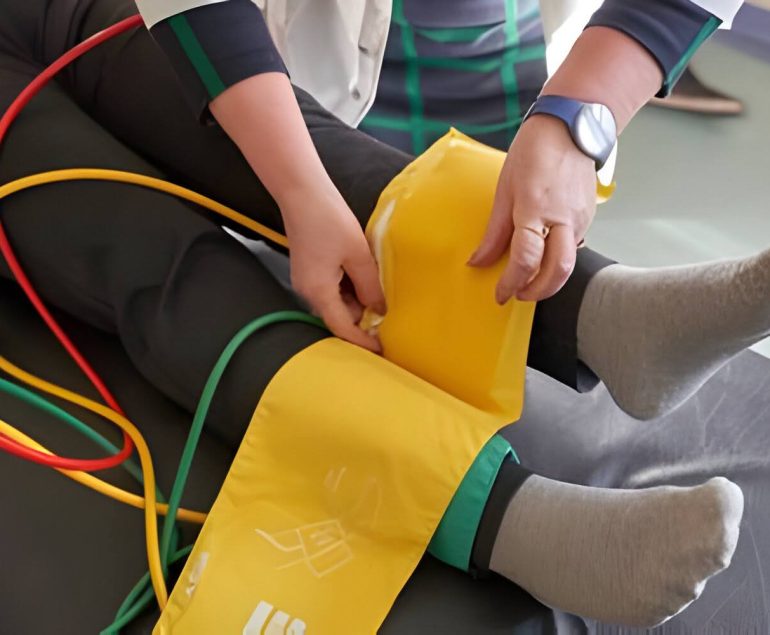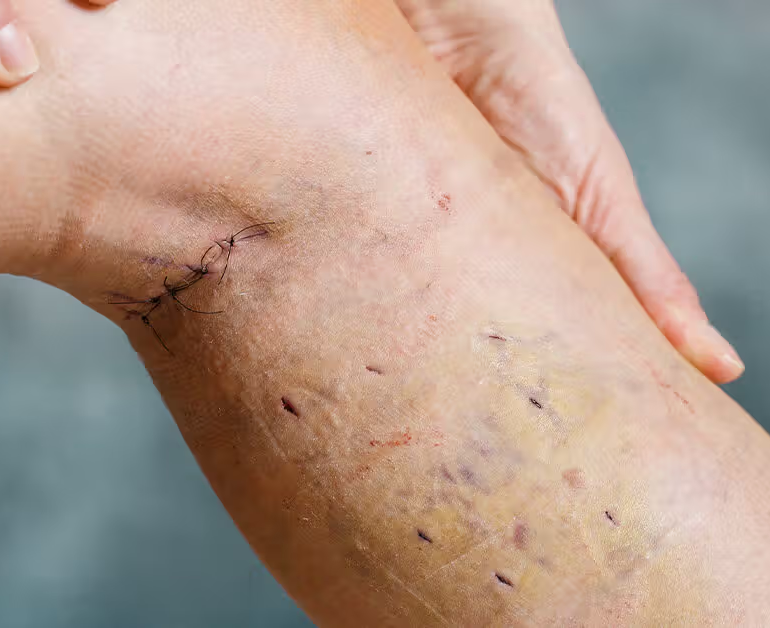A home sleep monitor, also known as a home sleep apnea test (HSAT) or portable sleep study, is a diagnostic tool used to assess sleep-related breathing disorders, particularly obstructive sleep apnea (OSA), in the comfort of the patient’s own home. It is a convenient and cost-effective alternative to in-laboratory polysomnography (PSG), the gold standard for diagnosing sleep disorders, which requires an overnight stay in a sleep laboratory.
Components
A typical home sleep monitor consists of the following components:- Portable Device: The main unit of the home sleep monitor is a small, portable device that records physiological data during sleep, including airflow, respiratory effort, oxygen saturation, heart rate, and body position. The device may be worn on the body (e.g., a wrist-worn device) or placed on a bedside table.
- Sensors: The device is equipped with sensors or probes that are attached to the patient’s body to monitor key physiological parameters. These sensors may include nasal cannulae or thermistors to measure airflow, respiratory effort belts to monitor chest and abdominal movements, pulse oximetry probes to measure oxygen saturation, and sensors to detect body position.
- Data Recording: The device records and stores sleep-related data throughout the night, including respiratory events (apneas, hypopneas), oxygen desaturations, heart rate variability, and sleep staging (e.g., sleep/wake cycles).
- Software: After the sleep study is completed, the data recorded by the device are downloaded and analyzed using specialized software by a sleep technologist or healthcare provider to assess sleep quality, identify respiratory events, and diagnose sleep disorders.
Procedure
The process of conducting a home sleep study typically involves the following steps:- Device Setup: The patient receives instructions on how to set up and use the home sleep monitor, including attaching sensors to the body, positioning the device for optimal recording, and activating the recording function before going to bed.
- Sleep Recording: The patient wears the home sleep monitor overnight while sleeping in their own bed. The device records sleep-related data continuously throughout the night.
- Data Retrieval: In the morning, the patient removes the sensors and returns the home sleep monitor to the healthcare provider or sleep center for data retrieval and analysis.
- Data Analysis: A sleep technologist or healthcare provider reviews the recorded data using specialized software to assess sleep architecture, detect respiratory events (apneas, hypopneas), calculate indices such as the apnea-hypopnea index (AHI) or respiratory disturbance index (RDI), and diagnose sleep disorders such as obstructive sleep apnea.
Indications
Home sleep monitors are indicated for patients with suspected sleep-related breathing disorders, particularly obstructive sleep apnea, who meet certain criteria, including:- Mild to moderate symptoms of sleep-disordered breathing (e.g., snoring, witnessed apneas)
- Low risk of significant comorbidities or complications
- Absence of other sleep disorders or medical conditions that require in-laboratory polysomnography for diagnosis
- Ability to understand and comply with instructions for using the home sleep monitor
Benefits
Home sleep monitors offer several advantages over in-laboratory polysomnography, including:- Convenience: Home sleep studies can be conducted in the patient’s own home, eliminating the need for an overnight stay in a sleep laboratory.
- Cost-Effectiveness: Home sleep studies are typically less expensive than in-laboratory polysomnography, making them more accessible to patients.
- Comfort: Sleeping in familiar surroundings may improve sleep quality and reduce the risk of sleep disruption during the study.
- Accessibility: Home sleep monitors can be used in remote or underserved areas where access to sleep laboratories may be limited.
Limitations
Despite their advantages, home sleep monitors have some limitations compared to in-laboratory polysomnography, including:- Limited Monitoring: Home sleep monitors may not capture as much detailed information as in-laboratory polysomnography, particularly regarding sleep staging and movement disorders.
- Patient Reliability: The accuracy of home sleep studies depends on the patient’s ability to properly use and wear the device, which may vary among individuals.
- Diagnostic Accuracy: Home sleep monitors may have lower sensitivity and specificity for diagnosing certain sleep disorders compared to in-laboratory polysomnography, particularly in patients with complex or comorbid sleep disorders.



